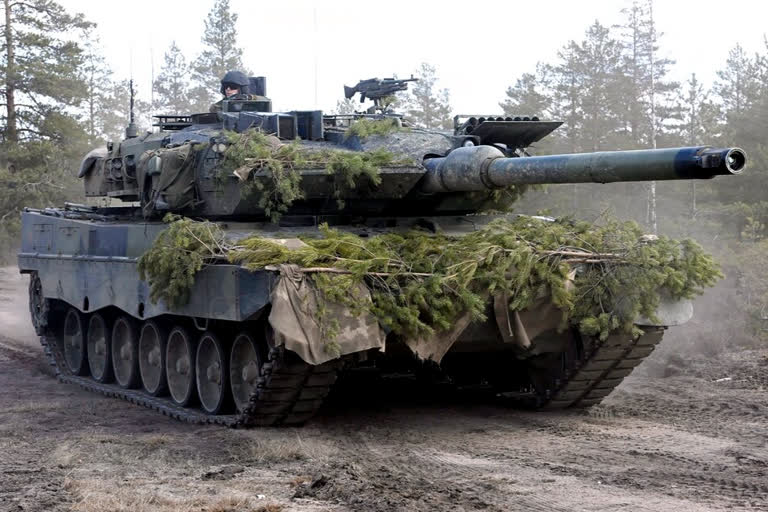New Delhi: Major wars and conflicts have provided the most fertile grounds to test weapons, military equipment, tactics and war ideas where the old pave the way for the new. While the picture of a destroyed and abandoned tank would be recorded for posterity as one of the abiding visuals of the Ukraine conflict, militaries and war scholars have been stunned by the havoc the conflict has wreaked on tanks and related platforms like armoured combat vehicles.
From February 24 till Wednesday (May 12, 2022), the reported total destruction of tanks and other armoured combat vehicles in the conflict stood at a mind-boggling 7,106. Of course, with both sides making much-inflated claims, the number might be quite an exaggerated one, but the fact remains that tanks have borne the brunt of the explosive power of both the warring sides.
Just to give an idea about the tank numbers, India uses about 5,000 tanks of different makes including the T-90, T-72 and Arjun. Till now, while Russia claims to have destroyed 2,998 tanks and other armoured combat vehicles of the Ukrainian side, Kyiv claims to have put 1,204 Russian tanks and 2,904 armoured fighting vehicles out of use.
In today’s techno-centric warfare, the slow-moving, heavy and lumbering tanks are becoming increasingly vulnerable to rocket launchers, Anti Tank Guided Missiles (ATGM), and drones which are proactively aided by satellites and other tools that detect tank movement from afar. In Ukraine, the US ‘Javelin’ ATGM has been the weapon of choice against the Russian tanks and has also become a symbol of Ukraine’s fight-back.
These ‘fire-and-forget’ can be operated by a single individual, making it highly mobile and undetectable at the same time as the operator can hide or take cover immediately after firing. The missile can either be fired directly at the target or can be fired upward up to 160 metres which then reverses direction to home onto the target in a near-vertical trajectory.
With a 2.5 km operating range, the ‘Javelin’ has two payloads - one explodes on impact while the other pierces the tank armour. Besides the ‘Javelin’, Ukraine has also received German, British, Swedish and Spanish anti-tank weapons. Even before the Ukraine conflict, the two-week-long war between Azerbaijan and Armenia over the Nagorno-Karabekh region in October 2020 had also revealed the increasing vulnerability of the tank even as Turkish-made weaponised drones wreaked havoc.
While Azerbaijan claimed to have destroyed 252 Armenian tanks and 50 infantry combat vehicles, the latter declared that it had destroyed a total of 784 armored vehicles belonging to Azerbaijan. In India’s case, tanks have not been of much use in the ongoing standoff with the Chinese PLA across eastern Ladakh due to the extremely mountainous and craggy landscape. Indian Army’s tanks are finding some use in certain flat swaths like in Chushul or Demchok.
It was World War I that sounded the death knell for the horse - traditionally used because of the rapid mobility, the crucial advantage of height and strength against a foot-soldier not to speak of the tremendous shock value. By World War II, soldiers on horseback had mostly disappeared while another fighting machine—the tank - gained in importance so much so that every country began coveting tanks and raising regiments.
Tanks scored primarily because they could take on fixed machine gun positions and then bulldoze through the adversary’s defences, all the time giving cover and support to advancing infantry. But from what it seems like, the Ukraine conflict has seriously questioned the relevance of tanks as part of the arsenal of a modern army.
Read: At UNHRC, India expresses concern over human rights situation in Ukraine



